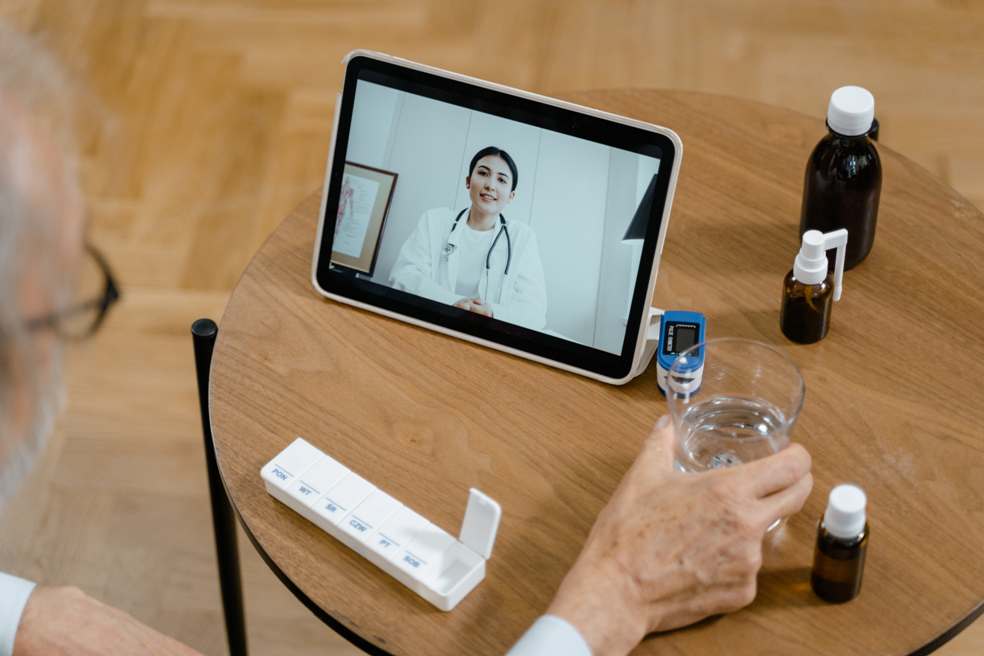
Virtual Doctor Visit
Resources for You

How to Get the Most Out of Your Virtual Doctor Visit
Telemedicine
In 2020, when everyone was in lockdown, many people were forced to schedule video-call appointments with doctors and medical specialists. Since then, we've seen an increase in virtual visits, and there's no sign of slowing down.
It's estimated that two-thirds of annual U.S. hospital visits can be managed at home. Americans and the health industry are starting to realize this, which is why patients are taking advantage of this convenience, and professionals are integrating virtual meetings into their service options.
Common online medical services include:
- Routine follow-up care
- Prenatal care
- Annual wellness exams
- Minor injuries
- Symptom evaluation
You should only schedule virtual doctor appointments for routine checkups and non-urgent conditions. Leaving your home may be inconvenient, or you may feel uncomfortable, but an online meeting with a medical professional has its limits. Many issues are too complex to discuss and can’t be properly examined online.
Serious injuries, sudden pains and other red-alert symptoms must be addressed by calling 911, your primary care office or your closest urgent care center.
Tips to Get the Most Out of Your Virtual Visit
Making the most of your online appointment boils down to being prepared ahead of your meeting. Here is a list of tips to help you get started:
Have Your Tech Ready
Ensure your Wi-Fi connection, including video and audio quality, is tested beforehand. Logging in 15 minutes early helps troubleshoot any technical issues. If your schedule is tight around your appointment time, do so earlier in the day.
Review Instructions Ahead of Time
Virtual doctor sessions often use specialized medical portals with specific features and security measures. Review platform directions a few days before and contact your medical professional's office if you have any queries.
Special note: The American Independent Business Coalition (AIBC) connects its members with access to MDLIVE, one of the top direct-to-patient telehealth platforms in the United States. MDLIVE provides on-demand access to primary care physicians, dermatologists, psychologists and psychiatrists. If you are an AIBC member or interested in joining, go to MDLIVE’s website to learn more and familiarize yourself with its features.
Select a Private, Well-Lit Space
To get the absolute best care and have a high-quality discussion with a care provider, try to emulate an in-person experience as best you can. In a doctor's office, you are in a quiet, private room with a medical professional where you can have a safe and productive conversation; you should have the same for your virtual visit.
Prepare Talking Points
Think beforehand about what you want to cover during your meeting. Take a few minutes to jot down specific concerns and questions you want to address during your visit; this way, you can bring them up without worrying about forgetting them.
Capture Viewable Symptoms
Capturing a visual aid of conditions or injuries on your smartphone will make it much easier for a medical professional to examine rather than trying to show them through your laptop camera live on the call. Most platforms allow you to upload photos or videos.
Gather Records and Scans
The kind of documentation you need depends on the type of medical appointment you have scheduled. Whether you need a medical history, doctor's note, medications you are taking or X-rays, you must have that uploaded for the virtual office to review. If you do not provide the proper documentation, the doctor may have to cancel the session. Each doctor's office and telemedicine portal has its own process for uploading documents, and it's recommended you check their procedures a few days in advance.
Record Vital Signs
Since the medical professional you are meeting with isn't there to do it, it's up to you to take your own vital signs. To save time during your appointment and make the most of the time with your doctor, take them right before the session begins.
Be Ready to Describe Your Condition
Be concise in explaining your condition and reason for the visit, especially when speaking to a triage nurse. Preparing in advance ensures a smoother appointment. The more you do before the session, the better the care and experience you receive from your virtual medical visit.
How smoothly your appointment runs is up to you. Checking off as many boxes as possible before your meeting begins will allow your doctor to provide better care and a more helpful experience. The less time you have to take during your session to get your technology working correctly or upload the necessary information, the more you can get out of your online medical visit.
If you liked this article, learn more about the American Independent Business Coalition by visiting aibcoalition.com.
Return